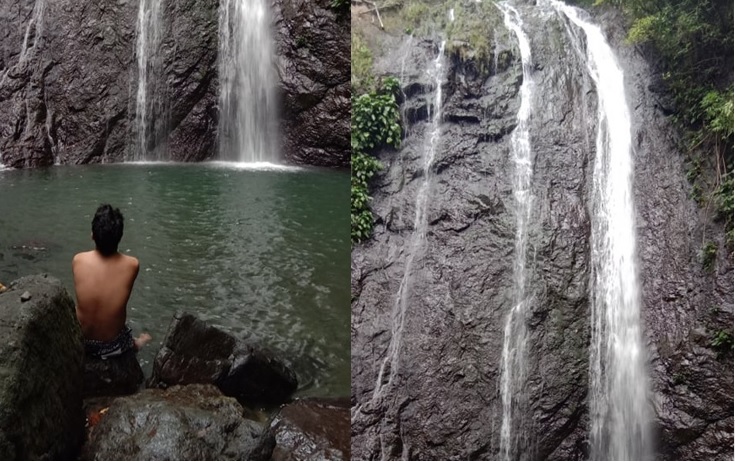Tuno was a sleepy farming village in the highlands of Tibiao. But that was before Australian journalist and adventure sports enthusiast Greg Hutchinson, founder of adventure tours company Tribal Adventures, started promoting white-water river kayaking in the late 90’s. He bought a piece of property along the bank of Tibiao River in Tuno, built Kayak Inn as a highland retreat and promoted kayaking as a sport.
In 1997, Tibiao River became the venue of the first International Kayaking Cup, earning for this mighty river gushing from Madia-as mountain the distinction as one of the best white-water rivers perfect for kayaking. Hutchinson’s venture did not go unnoticed as his company was awarded by the national tourism board the Kalakbay Award in 1999, specifically for Kayak Inn. Thus, Tuno’s position as Tibiao’s tourism hub was created.
Now, the feeder road from Barangay Importante, which acts as the access to the village is fully paved, and more mountain resorts have joined Kayak Inn: Campolly Highlands Resort, Calawag Mountain Resort, La Escapo and Blue Wave. Tourism entrepreneur Flord Calawag’s Katahum Tours offers a host of other activities such as water tubing, trekking, spa services like the famous kawa bath, including visits to the pottery village in Bandoja, lambaklad fishing in Malabor, even a visit to a museum whose only attraction is a giant pearl. Tibiao has become Antique’s busiest tourism destination, competing only with Culasi and Pandan farther north. Meanwhile, Hutchinson has moved his operation base to Palawan while maintaining Sandcastles Apartments in Boracay.
Aside from the resorts along Tibiao River, Tuno’s hidden gem is Bugtong Bato Falls, accessible only by a 30-minute trek from the village center into the forest, through a narrow trail passing by ricefields and sitios. The visitors are greeted by welcoming smiles of children by the window of small nipa huts, women doing their daily chore, an occasional farmer leading his carabao to pasture, or teenagers with their plastic containers to fetch water from the spring.
Bugtong Bato is a seven-tierred waterfalls; the first waterfall has a drop of maybe two to three storeys, and the seventh according to the guide is twice as high, but access is only until the third tier. The Barangay has organized site guides to lead visitors to the falls. The Barangay itself earns from environmental fees that visitors pay upon entry.
When the Covid-19 pandemic struck everyone clueless with a lockdown in March, times have become hard not only for resort operators, but more so for the workers whose livelihood depend on the tourist trade. These are the habal-habal drivers, guides, massage therapists, tubing guides, and service crew at the resorts. At least, business has returned for some of them since the general community quarantine was lifted in the third quarter, and some resorts have been allowed to operate after meeting the requisite protocols set by the Inter-Agency Task Force on Emerging Infectious Diseases (IATF).
Habal-habal or motorcycle service drivers charge 90-100 pesos (2 USD) per passenger now, around 250 percent increase from the pre-Covid-19 rate, because they are allowed only one passenger per trip. They have followed a strict queueing system to give each driver a passenger. Yet still, driver Cayo observes not all are lucky, some still find themselves without passengers because of the drop of tourist arrivals, and most guests come in their own cars. He augments his income by helping out at Campolly.
Cris, a site guide to Bugtong Bato, is happy that she has her turn at guiding this week. She earns 250 pesos (5 USD) per tour, enough to buy provisions for her family. In better times, each guide can have two to three turns per week. There are 60 of them site guides and they follow a carousel system. She has a swine fattening project after a loan from Cardbank to help her tide things over.
Mico, who is an on-call massage therapist at Campolly, earned his certification from the government agency TESDA. He has been offering Swedish massage for five years. Of the 400 pesos fee that the resort charges per client, he gets 250. It was good before the pandemic, when guests came to stay overnight, especially on weekends, but now most guests come for day trips, usually for Christmas parties, and he seldom gets booked.
Junie works as crew at Campolly. His job is to keep the grounds clean, and gather firewood to be used for the kawa hot baths. Aside from his daily wage, he gets an extra 50 pesos per client who gets the kawa bath offer. But he needs to clean the huge vats, build fire, heat water, and pick the herbs to throw in.
Joy, who tandems with her best friend to manage Campolly, says that they are beginning to recover now, since the GCQ was lifted. They have used the time to fix the resort, build new restrooms, and they are building new cottages. There is one resort that’s not able to get a certification to reopen yet, so they collaborate by accepting referrals from them, and sharing commissions.
This is still peak season for Christmas parties and family gatherings, and they are happy that the guests, albeit local tourists, have started coming back.











